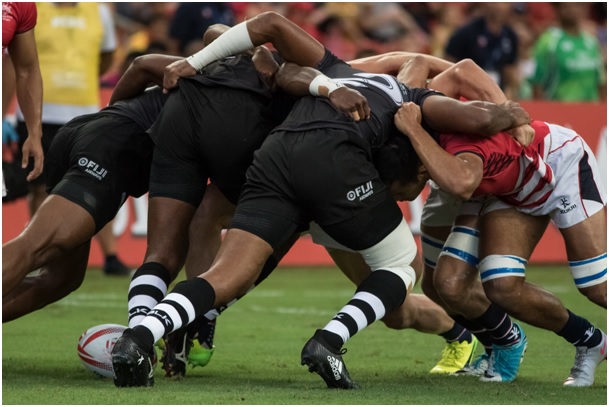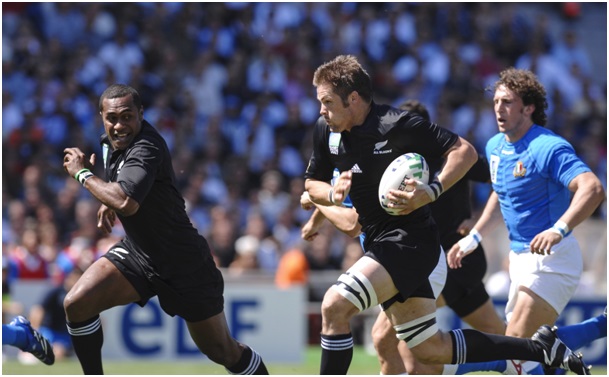A Coaching Model Created by Beatrice Dupasquier
(Transition Coach, BARBADOS)
 Introduction:
Introduction:
Retirement from sport and especially from the competition has the potential to be a significant change for professional athletes. It is an important transition that needs to be accepted and prepared for to assure success and tranquility.
There are two types of transitions, the one that is imposed on you, such as an injury during training or a competition, and the one you choose when you see years passing, and you want to organize your future.
Either way, the transition is inevitable. Being prepared and using coaching is the key to success in transitioning smoothly.
WhyI chooses to focus on transition:
My life has been a series of transitions, from one restaurant to another, from one country to another continent, from my family tradition to unknown cultures. My transitions were sometimes chosen, sometimes needed, and sometimes forced; sometimes smooth, and occasionally painful, but always unique and priceless.
We might not be able to change a fact or a situation, but we can choose how we respond to it. We can either fight the wind and sail against it or use it to move fast forward. Being able to recognize and understand it has been one of my most significant learnings in life. If you ask me about my journey, since the day I stepped out of the little village in France where I grew up, it looks like: I worked in small restaurants and cafes as well as some of the best in the world with 1, 2 & 3 Michelin stars. I worked hard for little, and later in my career, was recognized as the best pastry chef in Rio de Janeiro, Brazil. I lived in six countries on three different continents, learned four languages, and discovered very different cultures and traditions.
As some people fear changes and transition, I, on the other hand, look forward to it even more since I have learned to make the most of it.
My niche:
Athletes live a very competitive and intense life, putting full energy and power into their actions and daily training. An injury, failure, or aging can be taken very hard for someone living for their passion. When the competition stops, sometimes suddenly, how do you keep sustaining yourself emotionally, physically, professionally, socially, and even financially?
I choose to help athletes in this situation of going to the “afterlife,” assisting in re-directing their career and needs, finding new interests and passions.
My coaching model is related to my niche, as it is the process of being once again victorious, outside the field this time, using their full potential and experience.
Whatroledoescoaching play during the transition?
well, I must endure the presence of two or three caterpillars if I wish to be acquainted with the butterflies. The Little Prince, Antoine de St Exupery
When going through an imposed transition in life, you have the choice of the outcome by dealing with it positively. Decide to take advantage of what life is throwing at you and turn what can be painful into something beautiful and powerful.
How coaching interacts with the transition using my coaching model:
Scrum to S.C.O.R.E!
What is a scrum?
The scrum is a means of restarting play after a stoppage that has been caused by a minor infringement of the laws. This means that both teams can start fresh and have the opportunity to get an advantage in the game if the right action is taken at this time.
Find a way to transition from a fault to a winning point.
S- Start-off and structure a new life
- Take a picture of the moment and make a statement about your life.
- What are your life achievements?
- How did you reach your goals?
- Recognize the people who have crossed your path and helped you grow.
C- Challenge yourself to get clarity
- Accept the change and look forward.
- Allow yourself to dream.
- Decide what you want to do next.
- Use the knowledge and experience you have acquired during your years of training and competition.
- Honestly answer the questions, being true to yourself.
- Face your fears.
O- Optimize your potential to discover new opportunities
- Once you found what drives you, find out how to get there.
- Explore your possibilities and start taking action.
- Review all your options and choose the one that resonates the most with you.
R- Realize new projects
- Plan for new goals and guidelines.
- It can be overwhelming to start a big project, especially in this situation, so we break down big goals into pieces.
- Make each step affordable.
E- Evolvepersonally and professionally
- Be thoughtful of the changes and acknowledge the learning that transition brought to you.
- Recognize the evolution and the benefit of it
- Enjoy the results
You have efficiently used the opportunity to transition to Replay and Strike again!
Some of the coaching tools used during the process:
Trust Vs. Doubt
Trusting yourself to have or acquire the ability to do something different, allow yourself to dream, being able to learn again.
Creating awareness
Discovering a new potential outside of your routine and what you already know
Reframing perspectives
By looking at the situation from a different angle, you can imagine different outcomes and change your future.
Creating structure
Recognizing and introducing structure as a guideline is essential in helping the client and support him/her in a new life, new routine, and the creation of new habits.
Conclusion:
The “Scrum to Score” model is like the« third period» of the rugby game.
After the game, it is time for reflection, analysis, planning, and celebration. Reviewing the actions and making the most of them using a structure to get to the next level.
Athletes have a close relationship with their coach during their competition life, which is very different from what life coaching offers. Sports coaches support athletes by telling them what to do, when, and how. Alternately, the life coach needs to hold space for his/her client and create a safe environment based on trust. Life coaching is about directing the players to develop their own personal game, not being dependent on anyone, seeking help when needed for support and accountability.
 Introduction:
Introduction: